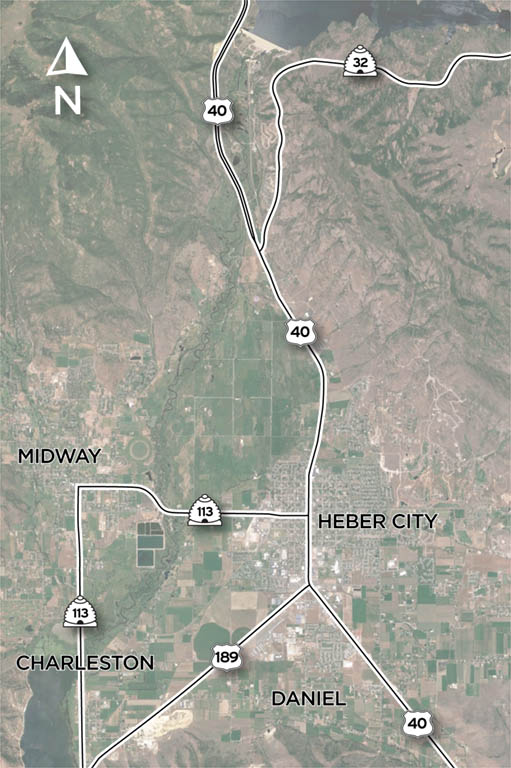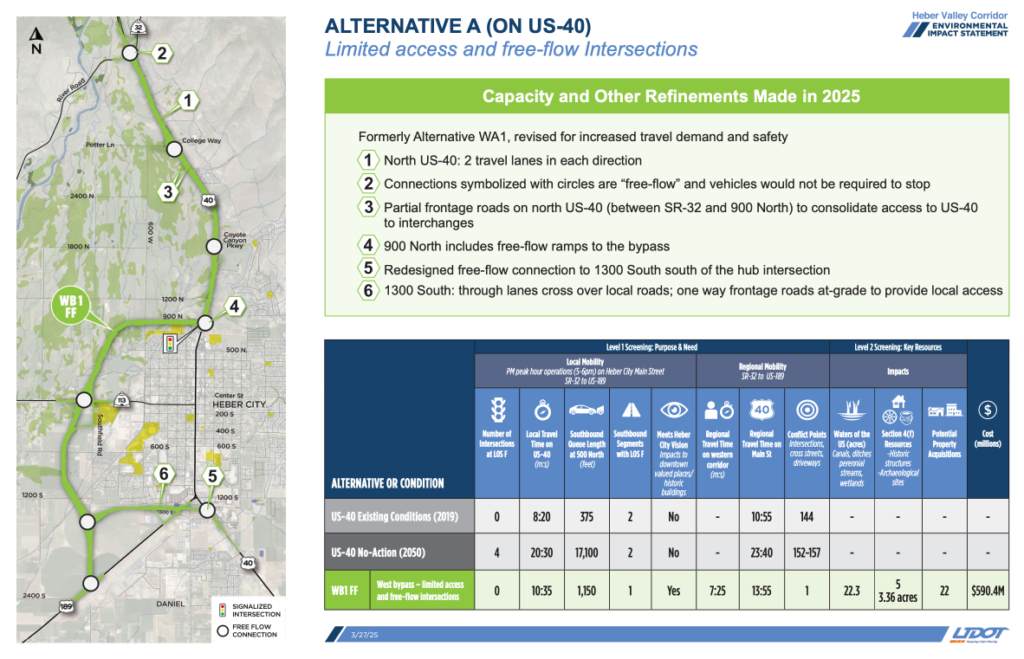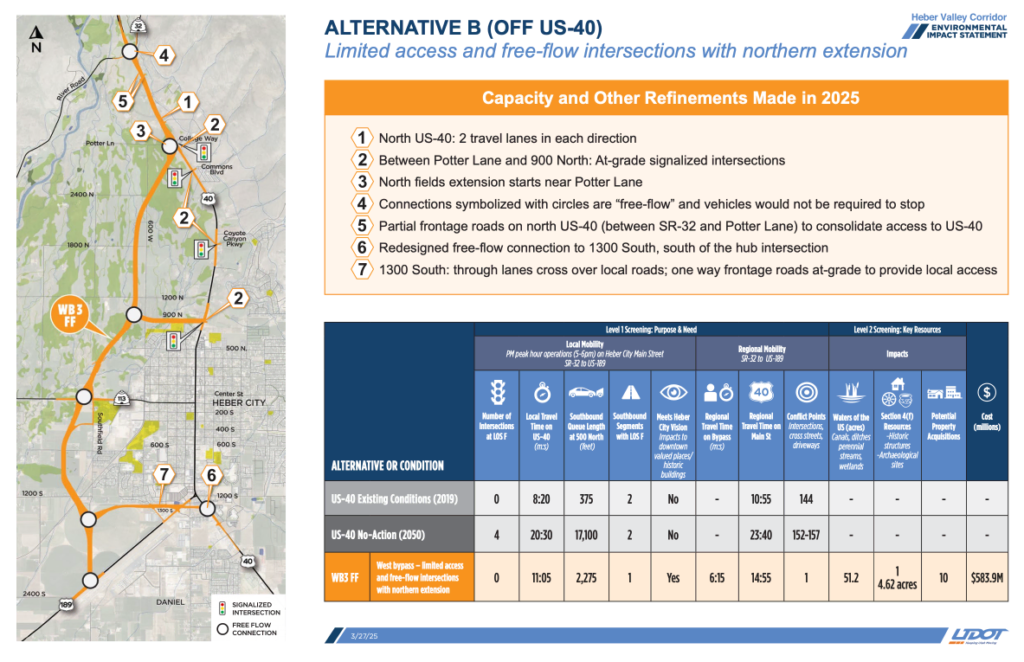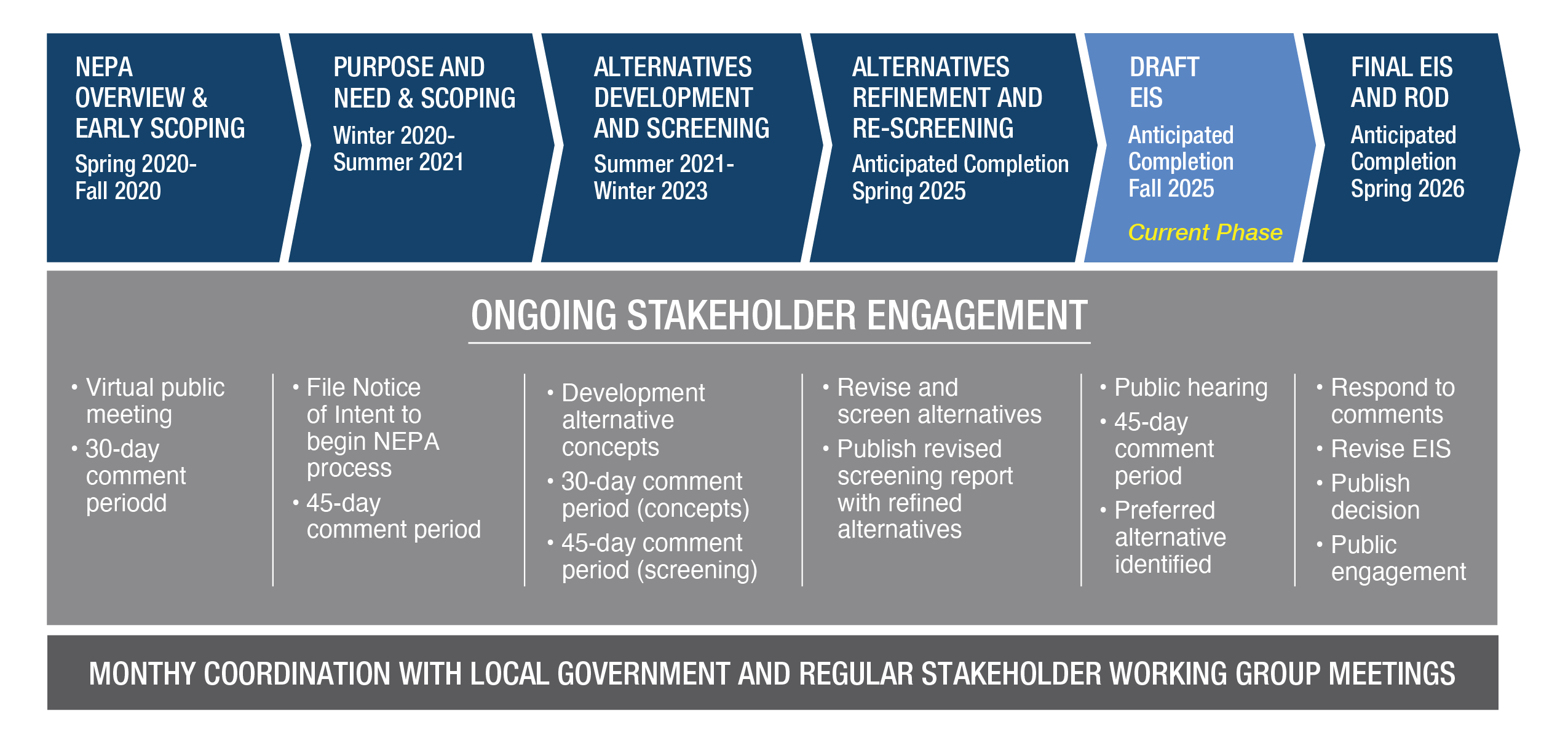Study Overview
The Utah Department of Transportation’s (UDOT) mission is to keep Utah moving while enhancing quality of life through transportation improvements in our state. UDOT is conducting an Environmental Impact Statement (EIS) to improve regional and local mobility on US-40 from SR-32 to US-189 and provide opportunities for non-motorized transportation while allowing Heber City to meet its vision for the historic town center.
Project Update
Revised Date: 7/2/25
Recent activities include updates to local councils, coordination with the North Fields Irrigation Board, and completing design refinements for both action alternatives. Ongoing efforts include coordinating with potentially impacted stakeholders, conducting field surveys in select areas, and evaluating the project alternatives in depth for the Draft EIS. Monthly meetings with local governments continue. The community will be invited to review and comment on the Draft EIS this fall once traffic analysis, updates to the alternatives, and impact analysis are complete.
Study Area
The Heber Valley Corridor EIS project team will be working with the stakeholders to evaluate improvements to address and enhance mobility through the Heber Valley and improve the operation of Heber City Main Street (US-40).
Through this process UDOT will develop transportation alternatives that could include a variety of solutions including reconfiguration of Main Street, improvements to other area roads, constructing new roads, and other options identified by the public.
Alternatives Being Studied in the Draft EIS
The map below shows the similarities and differences between the final two alternatives in the study. Our team is currently refining these alternatives and performing additional analysis ahead of releasing the Draft Environmental Impact Statement later this fall. At that time, the public will have an opportunity to review the alternatives more closely and provide feedback to our team.
Current Phase
Revised Date: 7/2/25
PROJECT UPDATE
A status update of activities on the EIS through June and what to expect in coming months.
Completed activities
Local Government Coordination
- Met with the North Fields Irrigation Board
- Updated Wasatch County Council on June 11 (UDOT update begins at 02:40)
- Updated Heber City Council on June 17 (UDOT update begins at 3:44:13)
Ongoing activities
Public Outreach
- Coordinating with potentially impacted property owners, if requested.
Alternatives Analysis
- Conducting field surveys to collect new data and verify some previously surveyed locations. All properties that may need to be surveyed have been notified via certified mail.
- Evaluating the project alternatives in depth to prepare the Draft EIS.
Local Government Coordination
- Meeting with Heber City and Wasatch County staff on a monthly basis.
- Preparing to meet with the Heber Valley Special Service District (HVSSD).
What to expect next
Local Government Coordination
- Updates at Wasatch County Council Meetings
- Updates at Heber City Council Meetings
- Updates to other local governments, if requested
Public Outreach
- Responding to property owner inquiries and scheduling meetings with key stakeholders if requested.
Detailed Evaluation of Alternatives
- Evaluate benefits and impacts from alternatives.
- Identify the preferred alternative and publish the Draft EIS (anticipated this fall).
- Notifications for the Draft EIS will begin at least two weeks ahead of the hearings and will be posted on the following platforms:
- Website
- Wasatch Wave, Salt Lake Tribune, Deseret News
- Community newsletters
- Social media (Facebook Group)
- Social media ads
- Mailed postcards
After we complete the traffic analysis and update the alternatives, we will provide the community an opportunity to review and comment on the new information in the Draft EIS.
More detailed information on the previously proposed alternatives and the analysis published to-date is available here.
Current And Upcoming Activities
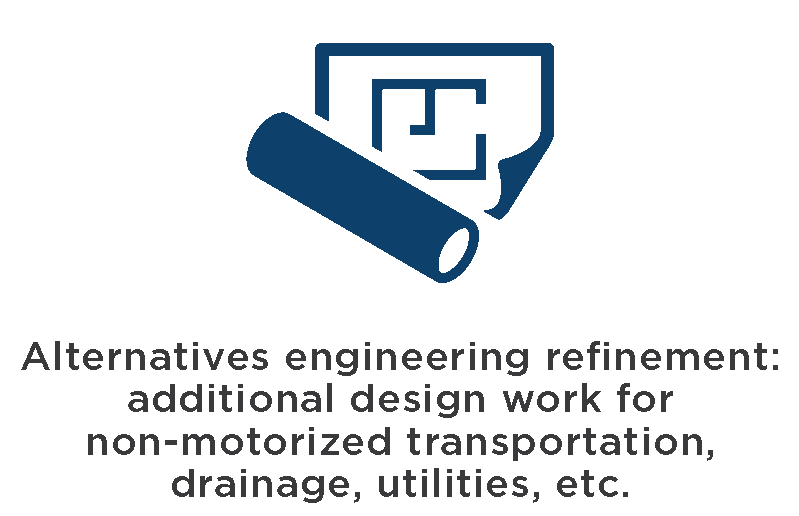
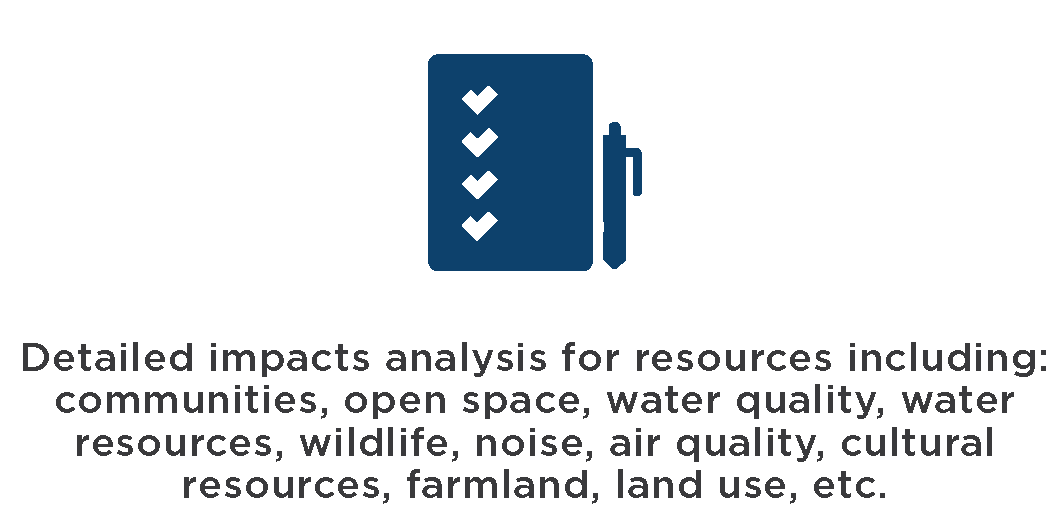
Submit Comment
Comments provided to the project team will be reviewed and considered by UDOT as it develops the project. All comments received will be documented in the project record. The study team will contact you if they need additional information or clarification.
Comments provided during the National Environmental Policy Act (NEPA) process to UDOT are a matter of public record and subject to public release, if requested. For more information, see the Terms of Use at the bottom of the Utah.gov website.
Comments that are publicly displayed through online tools must follow our UDOT Social Media Policy Participant Code of Conduct. Comments that are unacceptable under that policy may be removed at the administrator’s discretion.
If you receive an error when trying to submit a comment, please refresh your browser.
Contact Us
For more information on the environmental study underway in the Heber Valley and to share your ideas, please contact the project team through one of the ways listed below.
Write Us A Letter
Heber Valley Corridor EIS
c/o HDR
2825 E Cottonwood Parkway # 200
Cottonwood Heights, UT 84121
The environmental review, consultation, and other actions required by applicable Federal environmental laws for this project are being or have been carried-out by UDOT pursuant to 23 U.S.C. 327 and a Memorandum of Understanding dated May 26, 2022, and executed by Federal Highway Administration and UDOT.

